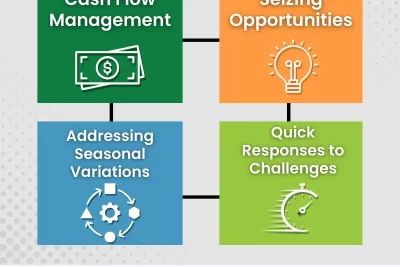
How Do I Find Out My PSAT Score? A Step-by-Step Guide

- Understanding the PSAT: What You Need to Know About Your Score
- Step-by-Step Guide: How Do I Find Out My PSAT Score?
- Where to Access Your PSAT Score Online: A Comprehensive Overview
- Interpreting Your PSAT Score: What Do the Numbers Mean?
- Tips for Accessing and Understanding Your PSAT Score Efficiently
Understanding the PSAT: What You Need to Know About Your Score
The PSAT, or Preliminary SAT, serves as a practice test for the SAT and is an essential tool for high school students aiming for college readiness. Understanding your PSAT score is crucial as it provides insights into your academic strengths and areas for improvement. The PSAT score report includes several components, including the total score, section scores, and cross-test scores, which can help guide your study efforts for the SAT.
Total Score: Your total PSAT score ranges from 320 to 1520, combining your scores from the Evidence-Based Reading and Writing (EBRW) and Math sections. This total score is a good indicator of your current readiness for college-level work and serves as a benchmark for your SAT preparation.
Section Scores: The PSAT breaks down your performance into two main sections: EBRW and Math. Each section is scored on a scale of 160 to 760. These scores highlight your strengths in reading, writing, and mathematics, allowing you to focus on specific areas that may need improvement. The section scores are particularly useful for identifying which subjects to prioritize in your studies.
Cross-Test Scores: Additionally, the PSAT provides cross-test scores that assess your skills in analyzing texts in history/social studies and science. These scores help you understand how well you can apply your knowledge across different subjects, which is crucial for success on the SAT and in college coursework. By analyzing all these components of your PSAT score, you can create a targeted study plan that addresses your unique needs and enhances your overall academic performance.
Step-by-Step Guide: How Do I Find Out My PSAT Score?
Finding out your PSAT score is a straightforward process, and knowing how to access it can help you better prepare for future standardized tests. Follow this step-by-step guide to ensure you retrieve your scores with ease.
Step 1: Check Your Test Date
Before you can find your PSAT score, it’s essential to know when you took the test. Scores are typically released in December for the PSAT/NMSQT and in April for the PSAT 10. Make sure you are checking for scores released after your test date.
Step 2: Create or Log into Your College Board Account
To access your PSAT scores, you need a College Board account. If you don’t have one, you can create it by visiting the College Board website. Be prepared to provide some personal information, such as your name, date of birth, and email address. If you already have an account, simply log in using your credentials.
Once you are logged into your College Board account, locate the “PSAT/NMSQT” or “PSAT 10” section on your dashboard. Click on the link that says “View Scores” or “My Scores.” You should see your PSAT score report, which includes your total score, section scores, and other relevant information.
Step 4: Understand Your Score Report
Your PSAT score report provides valuable insights into your performance. Look for the following key components:
- Total Score: This is your overall score out of 1520.
- Section Scores: These scores are broken down into Math and Evidence-Based Reading and Writing.
- Percentile Rank: This indicates how you performed compared to other test-takers.
Familiarizing yourself with these details can help you identify your strengths and areas for improvement as you prepare for future exams.
Where to Access Your PSAT Score Online: A Comprehensive Overview
Accessing your PSAT score online is a straightforward process that allows students to quickly review their performance and understand their strengths and weaknesses. The College Board, the organization that administers the PSAT, provides a user-friendly platform for students to access their scores. To get started, you’ll need to visit the official College Board website.
Steps to Access Your PSAT Score
- Visit the College Board website: Navigate to www.collegeboard.org.
- Create or log into your College Board account: If you haven’t already, you will need to create an account using your email address and a password. If you have an existing account, simply log in.
- Locate your PSAT score: Once logged in, find the section for PSAT scores, which may be labeled as “My Scores” or “View Scores.”
- Review your scores: Click on the relevant test date to view your scores, which will include your overall score as well as section scores for evidence-based reading, writing, and math.
After accessing your scores, you will also have the opportunity to explore additional resources provided by the College Board. These resources can help you analyze your performance in detail, offering insights into areas where you excelled and subjects that may need further improvement. Additionally, you can access practice questions and personalized recommendations for study materials tailored to your performance.
Understanding Your PSAT Score Report
Your PSAT score report will not only show your total score but also provide a breakdown of your performance in different sections. This includes the following key components:
- Total Score: A cumulative score that reflects your overall performance.
- Section Scores: Individual scores for reading, writing and language, and math.
- Percentile Ranks: Information on how your scores compare to those of other test-takers.
- Subscores: Detailed insights into specific skills within each section.
By understanding these elements, you can better prepare for future standardized tests and improve your academic performance.
Interpreting Your PSAT Score: What Do the Numbers Mean?
Understanding your PSAT score is crucial for evaluating your academic strengths and weaknesses, as well as preparing for future standardized tests like the SAT. The PSAT, or Preliminary SAT, provides a numerical score that reflects your performance across different sections. Your total score ranges from 320 to 1520, combining your scores from the Evidence-Based Reading and Writing (EBRW) and Math sections. Each section is scored on a scale from 160 to 760, allowing you to see where you excel and where you may need improvement.
Section Scores: The two main components of your PSAT score are the EBRW and Math sections. Within the EBRW section, you will find subscores for Reading and Writing, which can help you identify specific areas to focus on. For example, if your Reading score is significantly lower than your Writing score, it may indicate a need for additional practice in reading comprehension. Similarly, your Math score is divided into two subsections: Heart of Algebra and Problem Solving and Data Analysis. This breakdown can guide your study efforts effectively.
Percentiles: Alongside your raw scores, the PSAT report includes percentile rankings. This statistic shows how your performance compares to other students who took the test. For instance, if you scored in the 75th percentile, you performed better than 75% of test-takers. Understanding your percentile can help you set realistic goals for improvement and gauge your readiness for the SAT. It’s essential to aim for a percentile that aligns with your college aspirations, as many institutions consider these scores during the admissions process.
National Merit Scholarship Program: Another significant aspect of your PSAT score is its role in the National Merit Scholarship Program. High PSAT scores can qualify students for scholarships and recognition, providing further motivation to excel. The qualifying score varies by state, so it’s important to check the specific benchmarks for your region. Your PSAT score report will also indicate if you are in the running for this prestigious recognition, offering a clear incentive to focus on your academic performance moving forward.
Tips for Accessing and Understanding Your PSAT Score Efficiently
Accessing your PSAT score efficiently is the first step toward understanding your performance and planning your next steps. To begin, visit the official College Board website, where your scores are typically released in December. Ensure you have your College Board account credentials handy, as you will need to log in to access your score report. If you don’t have an account, create one using the same email you used when registering for the PSAT.
Once you’ve logged in, navigate to the “Scores” section. Here, you’ll find your PSAT/NMSQT score, along with a detailed score report that includes your total score, section scores, and subscores. To make sense of these numbers, look for the score ranges that indicate how your performance compares to other test-takers. Familiarize yourself with the scoring scale, which ranges from 320 to 1520, as this will help you gauge where you stand.
Understanding your score is equally important. The score report provides a breakdown of your performance in Math and Evidence-Based Reading and Writing (EBRW). Pay attention to your subscores, which offer insights into specific areas such as command of evidence and problem-solving skills. Utilize the College Board’s resources, including the online score interpretation guide, to help you decode your results and identify strengths and weaknesses.
To enhance your understanding, consider creating a study plan based on your score report. Use the provided feedback to target areas for improvement. For example, if your reading score is lower than expected, you might focus on practice materials that emphasize reading comprehension. Additionally, engage with online forums or study groups where you can discuss your scores and share strategies with peers who are also preparing for future standardized tests. This collaborative approach can provide new perspectives and tips for effective study habits.
Did you find this article helpful? How Do I Find Out My PSAT Score? A Step-by-Step Guide See more here General.
Leave a Reply





Related posts